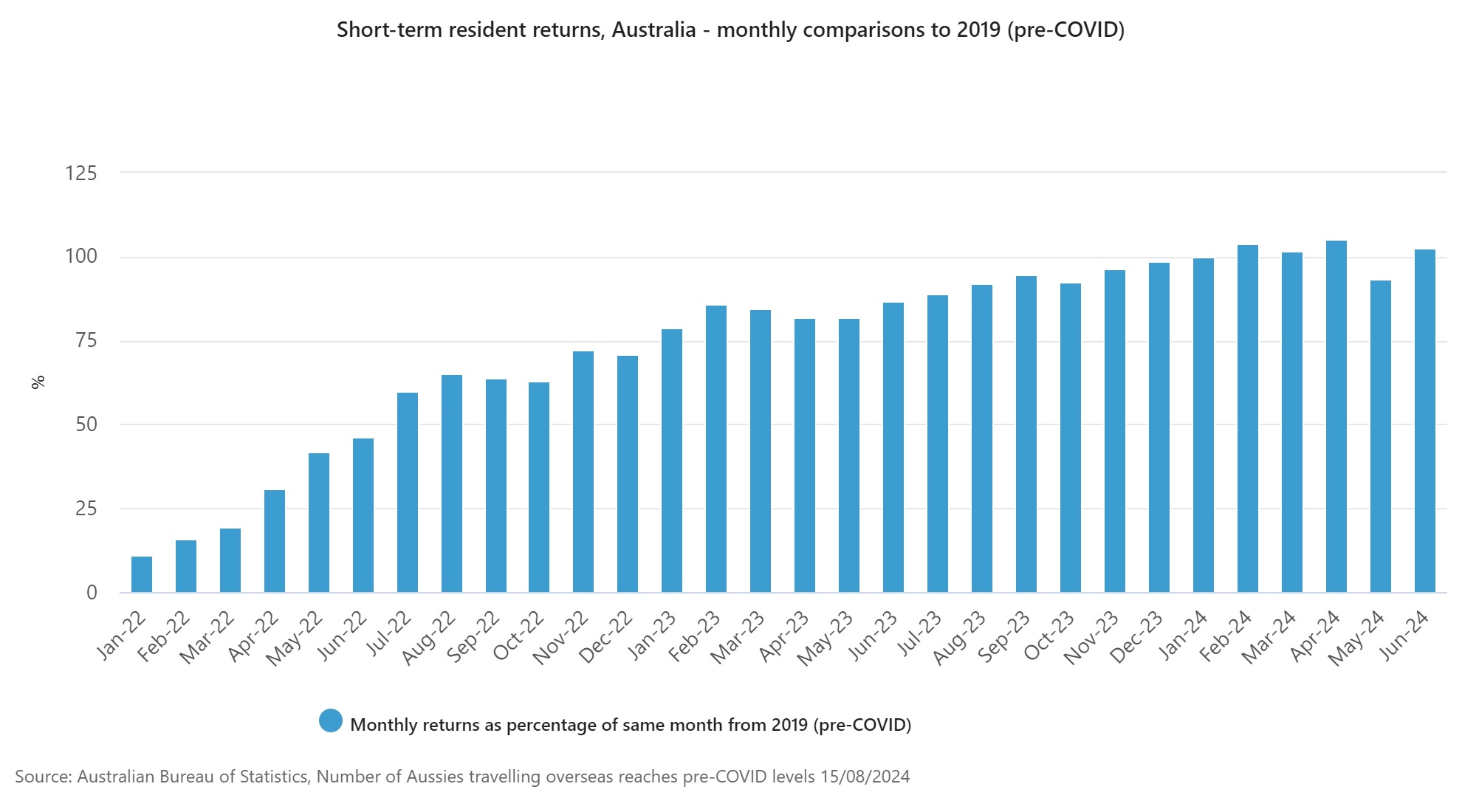Australia’s international travellers have officially returned to their pre-COVID habits.
The latest figures from the Australian Bureau of Statistics (ABS) show the number of Australians returning from overseas trips in 2023-24 was above 2019 levels.
ABS Head of Migration Statistics Jenny Dobak said the number of residents returning from short-term trips in 2023-24 was 32 percent higher than in 2022-23 and reached 98 percent of the 2018-19 (pre-COVID) volume.
“The number of resident returns each month reached 100 percent of the pre-COVID (2019) volume in January 2024, for the first time since international travel restrictions were lifted,” Ms Dobak said.
“It has been above 100 percent of pre-COVID volumes in the following months, with the exception of May 2024.”
Ms Dobak said Indonesia continued to be the top travel destination for Australian residents in 2023-24 with 1.5 million trips, after taking the top spot for the first time on record in 2023.
“Holidays were the leading reason for travel to Indonesia in 2023-24, making up 87.1 percent of travel there,” Ms Dobak said.
She said the growth in Australian resident trips to Indonesia outpaced the increase in trips to New Zealand by around four to one.
“New Zealand remains as the second most common travel destination with 1.3 million trips to the Land of the Long White Cloud in 2023-24.”
Ms Dobak said the United States was the only country in the top five travel destinations where numbers were lower than 10 years ago, with a total of 714,300 trips, down from 970,230 trips in 2013-14.
She said short-term visitor arrivals recovered to 85 percent of the 2018-19 level, increasing in all states and territories over the year, with holiday once again the leading reason for visiting Australia.
“China made a notable movement in the top five countries that short term visitors arrived from, becoming the second-most popular country for the first time since the COVID-19 pandemic,” Ms Dobak said.
“India was the fifth-most popular destination, however it was the only country in the top five to surpass its pre-COVID level.”









